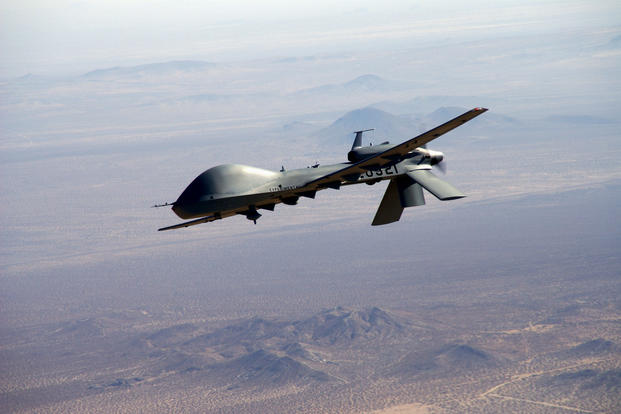By Matthew Cox
 The U.S. Army is designing its future fighting force around sophisticated unmanned systems designed to work with the service's manned combat vehicles and aircraft. But the service's vice chief of staff warned today of the dangers of depending too much on drone technology. For nearly a year, the Army has been deeply focused on its new modernization strategy, an effort that promises to produce next generation combat vehicles and future vertical lift aircraft that will team with unmanned systems. The concept is designed to give commanders the option of sending unmanned systems into harm's way before taking unnecessary risks with soldiers' lives. "We are looking very carefully on the ground and in the air on how we continue to progress with the manned-unmanned teaming," Gen. James McConville said at the National Defense Industrial Association's 2018 Army Science & Technology Symposium and Showcase in Washington, D.C. He added that the concept would give combat units a distinct advantage when operating in places like Sadr City, a densely-populated suburb of Baghdad that U.S. forces struggled to secure during the war in Iraq.
The U.S. Army is designing its future fighting force around sophisticated unmanned systems designed to work with the service's manned combat vehicles and aircraft. But the service's vice chief of staff warned today of the dangers of depending too much on drone technology. For nearly a year, the Army has been deeply focused on its new modernization strategy, an effort that promises to produce next generation combat vehicles and future vertical lift aircraft that will team with unmanned systems. The concept is designed to give commanders the option of sending unmanned systems into harm's way before taking unnecessary risks with soldiers' lives. "We are looking very carefully on the ground and in the air on how we continue to progress with the manned-unmanned teaming," Gen. James McConville said at the National Defense Industrial Association's 2018 Army Science & Technology Symposium and Showcase in Washington, D.C. He added that the concept would give combat units a distinct advantage when operating in places like Sadr City, a densely-populated suburb of Baghdad that U.S. forces struggled to secure during the war in Iraq.
"There is value to having an unmanned aerial system teamed with a manned system, especially when you are operating over places like Sadr City where you get shot at a lot and it is much easier to put an unmanned aerial system over that and use the weapon systems on a manned aircraft to work together to engage targets," he said.
The Army is also interested in teaming unmanned systems with other unmanned platforms, McConville said.
"I can even see us with unmanned-unmanned systems teaming in the future ... an unmanned vehicle could deliver smaller unmanned aerial systems that would be in a place to penetrate or reduce an integrated air defense," McConville said.
But as useful as unmanned technology is, "it's not a panacea," McConville said.
"You still need soldiers on the battlefield; drones don't smell, they don't feel," he said. "If you are watching me here on video, you don't get the same feeling as if you are in the crowd, and it's the same thing in combat."
Observing action on a live video feed from inside a tactical operations center is "not the same as actually being there," he said. "When you are working with unmanned systems, you've got to be careful that you don't believe that you know everything that is going on, that is where the danger is on the unmanned side of the house."
-- Matthew Cox can be reached at matthew.cox@military.com.
No comments:
Post a Comment